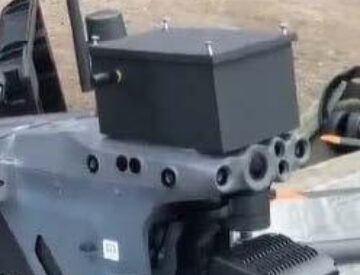In a groundbreaking experiment, T-Level Electronic Engineering students at Kendal College test the limits of LoRa communication by mounting a custom-built transmitter on a drone.
Their objective? To explore the potential of using a drone as a repeater, enabling remote data loggers in isolated locations to communicate without direct LoRaWAN radio connections.
Introduction
In a groundbreaking experiment, T-Level Electronic Engineering students at Kendal College test the limits of LoRa communication by mounting a custom-built transmitter on a drone. Their objective? To explore the potential of using a drone as a repeater, enabling remote data loggers in isolated locations to communicate without direct LoRaWAN radio connections.
The Challenge
Remote data logging is crucial for environmental monitoring, especially in rugged terrains like the Lake District. However, maintaining a reliable communication link is challenging when LoRaWAN gateways are out of range. That’s where the idea of using a drone as a LoRa radio repeater comes in—potentially bridging the gap and easing the retrieval of remote data.
The Team and Their Roles
To tackle this challenge, six engineering students collaborated in well-defined roles:
- Joe Dent, Drone Pilot: Controlled the drone while maintaining visual line-of-sight.
- James Randall, Drone Navigation: Plotting drone position and course.
- Ollie Lunn, Communications Analyst: Measured signal strength and mapped coverage.
- Summer Doran, Communications Analyst: Measured signal strength and mapped coverage.
- Luke Wharram, Communications Analyst: Measured signal strength and mapped coverage.
Design and Preparation
The students designed and built the LoRa transmitter, ensuring it was lightweight and securely mounted on the drone. After rigorous pre-flight checks—including power tests, signal calibration, and weather assessments—the team was ready to take off.
The Flight Test
With the transmitter activated, the drone took off, gradually increasing its distance from the ground station. The goal was to identify the maximum range while maintaining reliable communication with remote loggers. The Communications Analysts recorded signal strength and data integrity at various points.
Breaking New Ground
As the drone approached the limits of LoRa range, the team observed signal drop-offs, helping them map the maximum coverage area. By acting as a repeater, the drone can successfully relay data from loggers that would otherwise be out of range.
Post-Flight Analysis
After the trial, the team gathered to analyse the data. Their findings confirmed the drone's potential as a cost-effective repeater, opening new possibilities for remote environmental monitoring and IoT applications.
Innovation in Action
This LoRa range trial is a testament to the hands-on learning approach at Kendal College’s Green and Future Skills Academy. By taking ownership of real-world challenges, students gain invaluable experience that prepares them for the engineering landscape of tomorrow.
Looking Ahead
The success of this trial paves the way for more advanced applications of LoRa and drone technology. Future iterations may include deploying drones as temporary communication nodes in disaster-stricken areas or for agricultural monitoring.
Conclusion
With this innovative experiment, the students at Kendal College have demonstrated that the sky is not the limit—it's just the beginning. As they continue to push the boundaries of communication technology, they’re solving real-world problems and inspiring the next generation of engineers.











